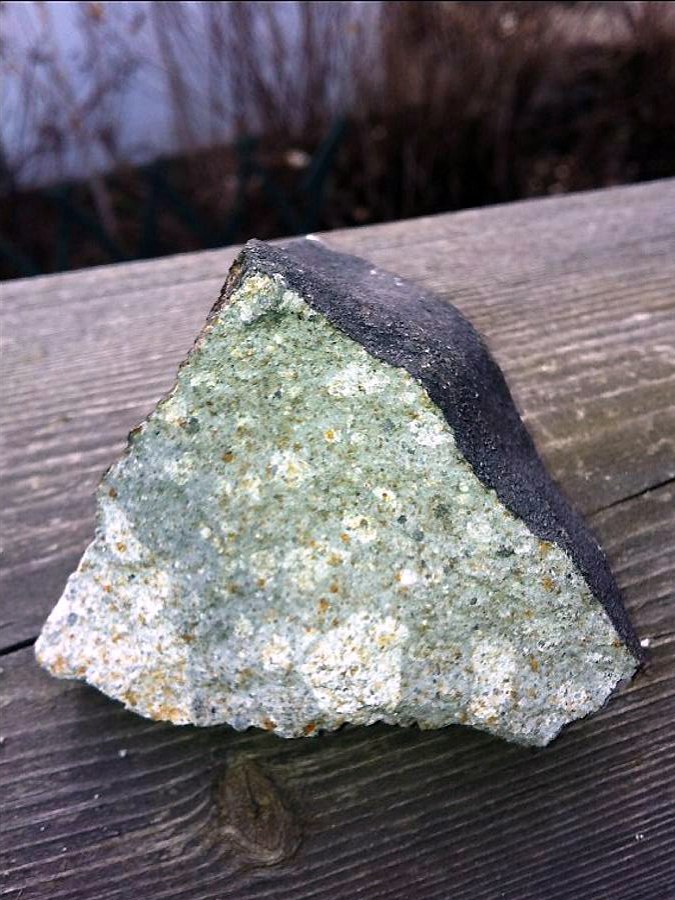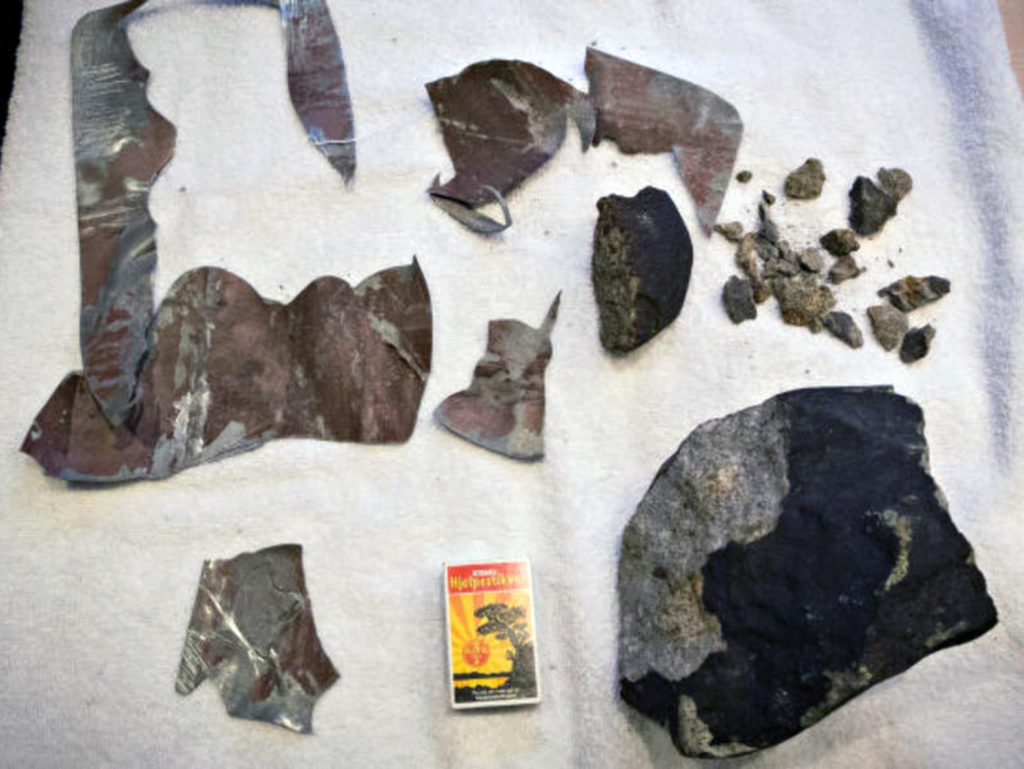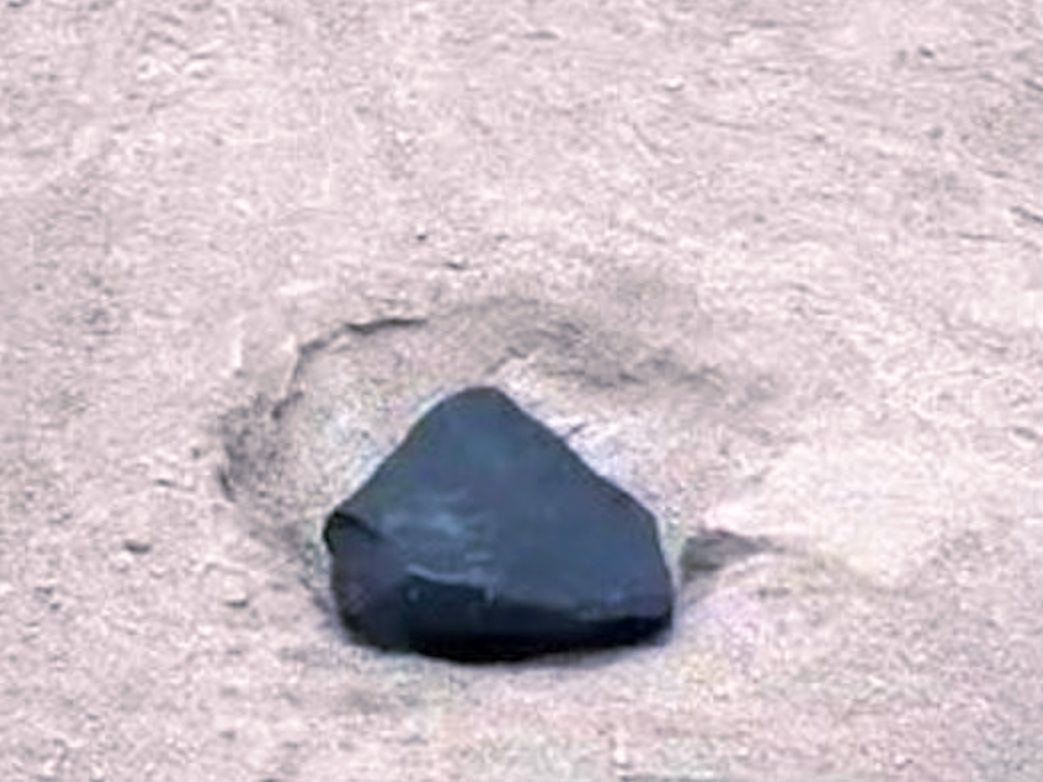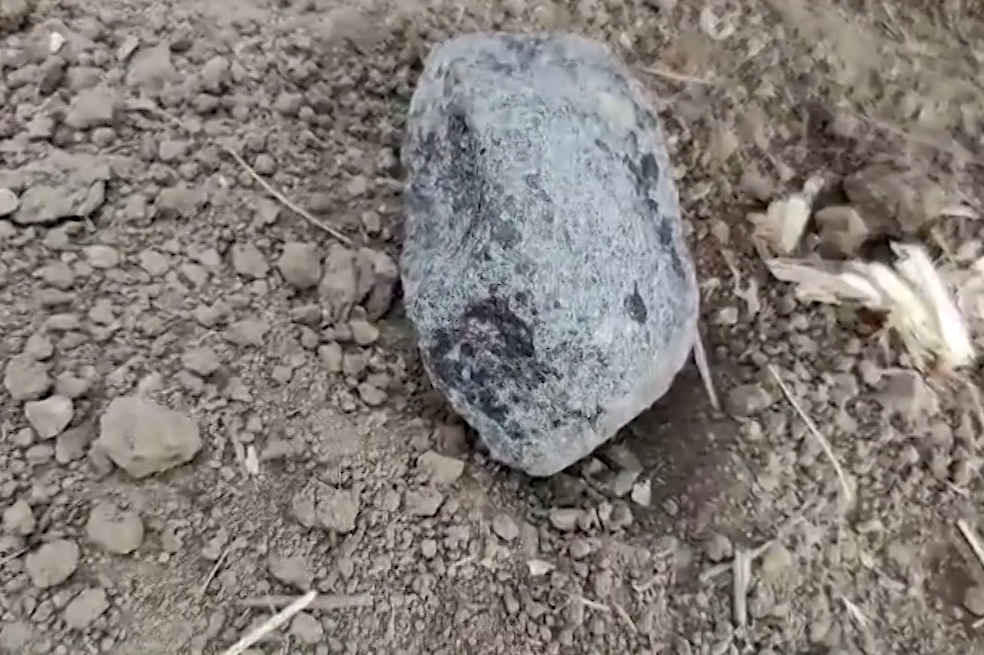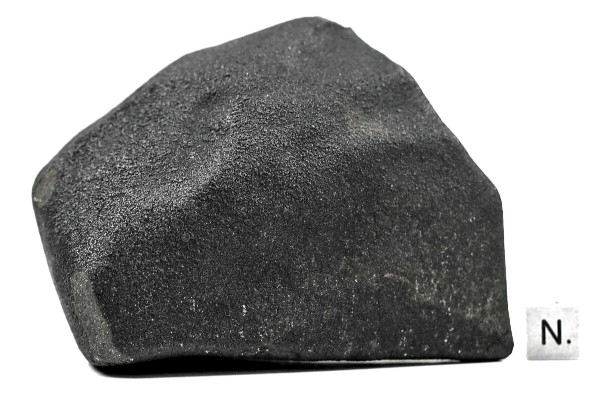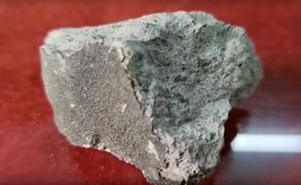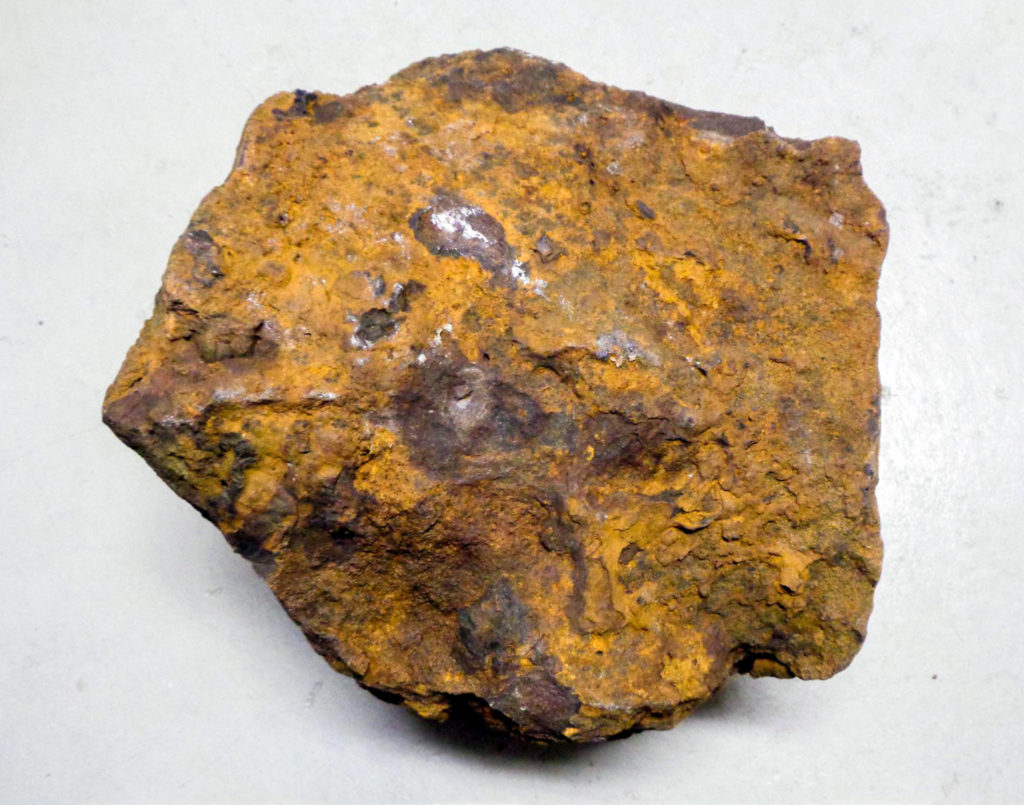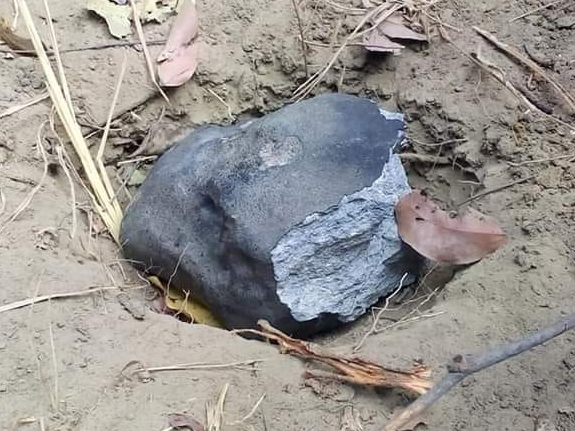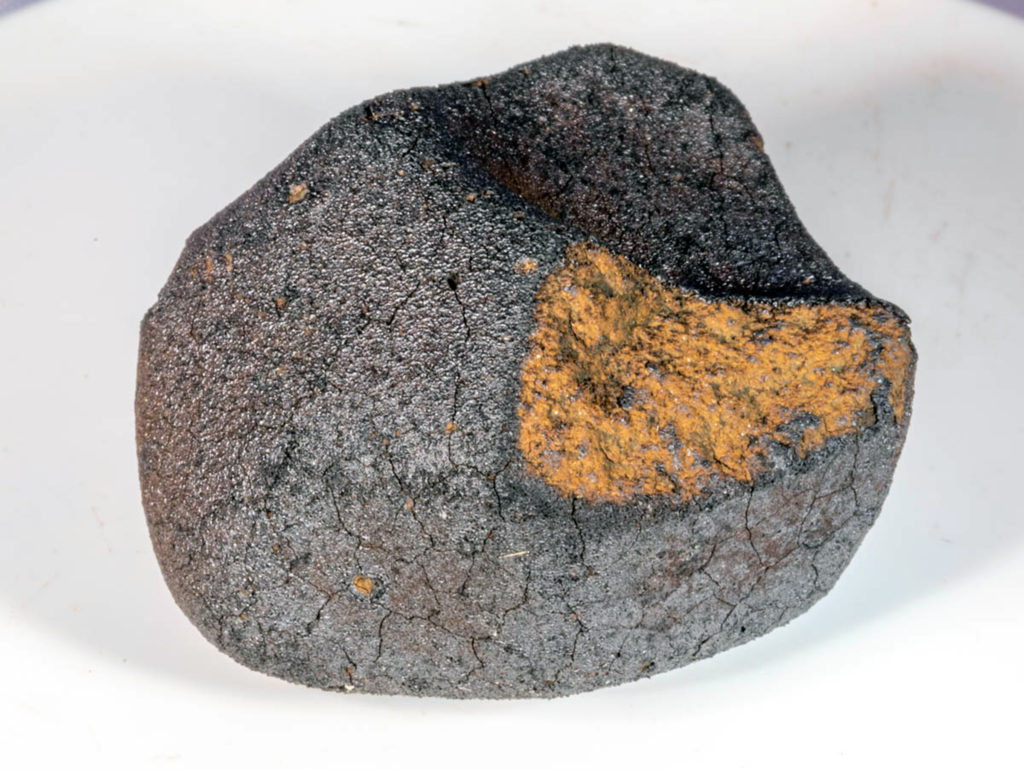Oslo
Meteorite fall (4.35 kg, H3-6, S3) in Oslo, Norway on ~9 March 2012
The Rodeløkka specimen (550 g)
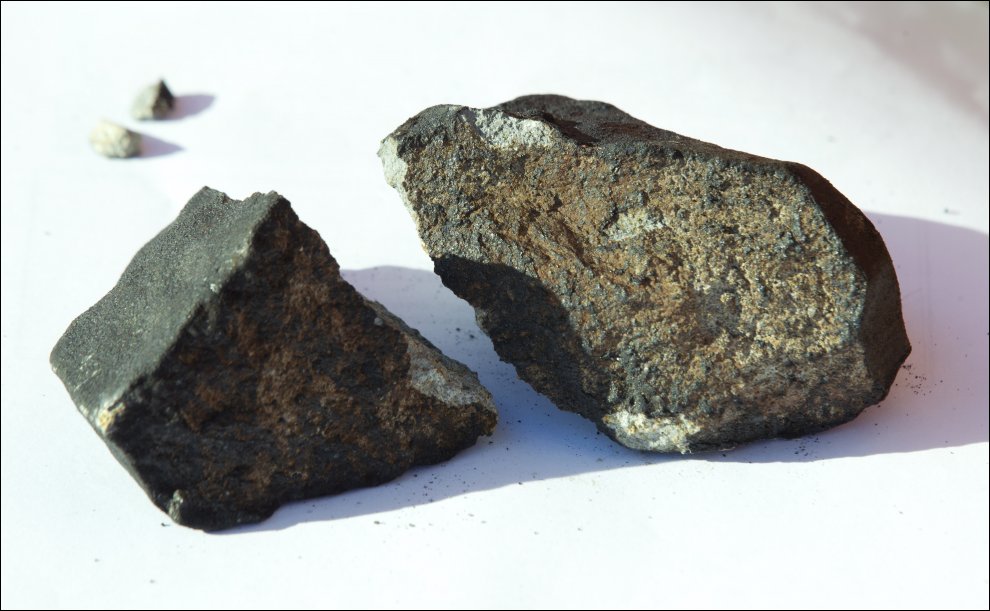
The first Oslo specimen (Rodeløkka). Photo: Terje Bendiksby
On 12 March 2012 Anne-Margrethe Thomassen discovered broken wooden beams in the roof overhang of the Thomassen family’s cabin house at location 59° 55′ 48.00” N, 10° 46’18.25” E in the allotment-garden Rodeløkkens kolonihager. The damage had not been there a few days before. Then she discovered a meteorite fragment on the cladding below the hole in the roof but thought it was an ordinary stone. At that time the other fragment was still stuck in the roof and only found later while inspecting the roof. All fragments together weigh 550 (585?) grams. The 550-gram main mass is in the collection of Natural History Museum in Oslo today.

The two fragments of the Rodeløkka specimen. Photo: I.V. Haram
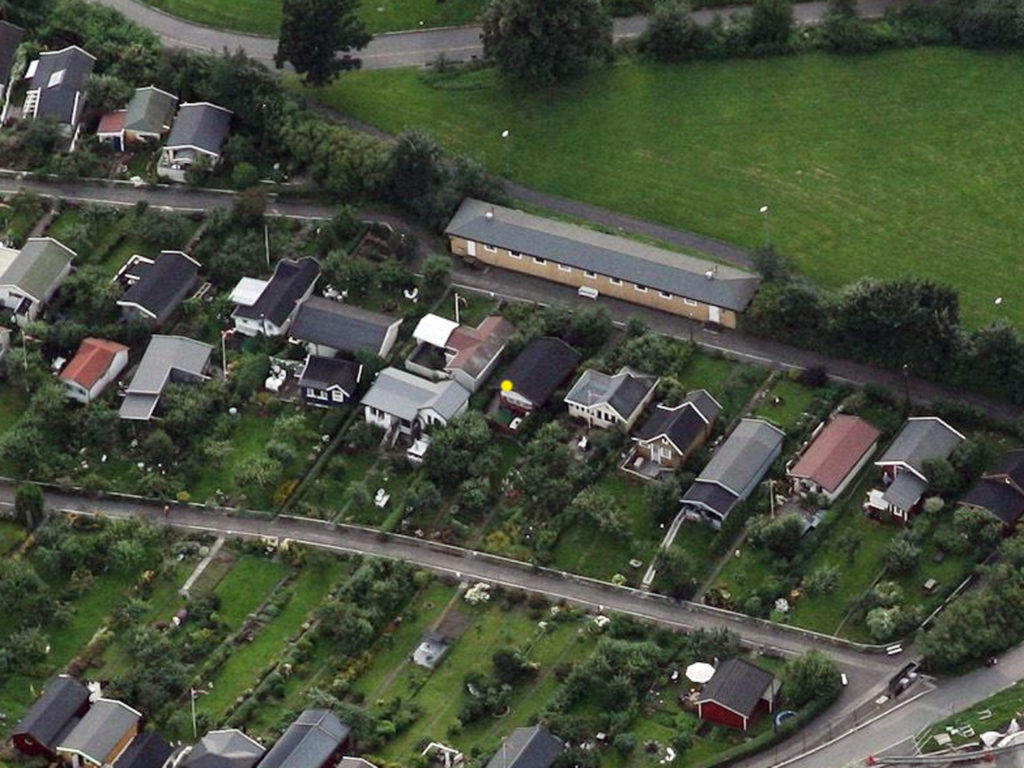
The yellow dot shows the exact fall location of the meteorite. Photo: karmaka
The Ekebergsletta specimen (~ 700 + 26 g)
On 12 March at around 1 p.m. while walking her dog on the Ekebergsletta field Liv Kibsgaard found a 700-gram mass with a broken end on the frozen grass of the Ekebergsletta field in Oslo, near location 59°53’46.46″N, 10°46’16.12″E. Immediately after the find Kibsgaard phoned her brother, a geologist. She knew very well what she had found and could not do much the following day and could not sleep through the night between Tuesday and Wednesday because she was so excited about having found her ‘barnet’ (child) as she called it. A few days later Martin Holst, as member of a small search team, found the broken off 26-gram fragment of Kibsgaard’s mass.

The large mass of the Ekebergsletta specimen. Photo: Olav Eggesvik
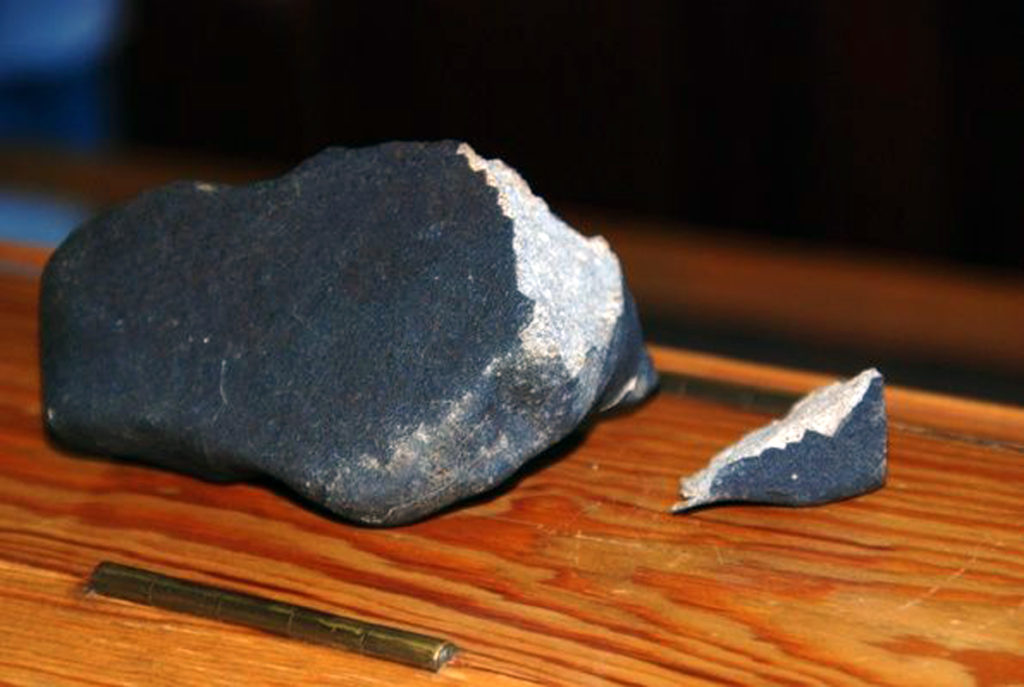
The large mass (~ 700 g) and the small 26-gram fragment of the Ekebergsletta specimen. Photo: Morton Bilet
The 2.8-kilogram specimen from Brekke
On 6 February 69-year old Steinar Engh noticed that large icicles had formed on the roof above the terrace of his home at location 59°58’04.5″N 10°46’17.3″E in Brekke outside the Oslo city centre. He took a ladder to investigate a possible water leak from the tenant’s porch on the second floor which is only rarely used. He found a hole in the tin plate and wood of the floor and next to it a small stone which he threw into the garden thinking it was just rubble. The lower plank layer of the terrace roof below was still intact. Later Engh reached with his hand into the hole and touched the dry meteorite fragment. The larger fragment of the two bigger fragments had been protected from weather between the planks while the more corroded smaller one was exposed to terrestrial weathering. He suspected that it had to be a meteorite and contacted a neighbor working at the Natural History Museum. The two fragments and some smaller ones have a total weight of 2.8 kilograms.
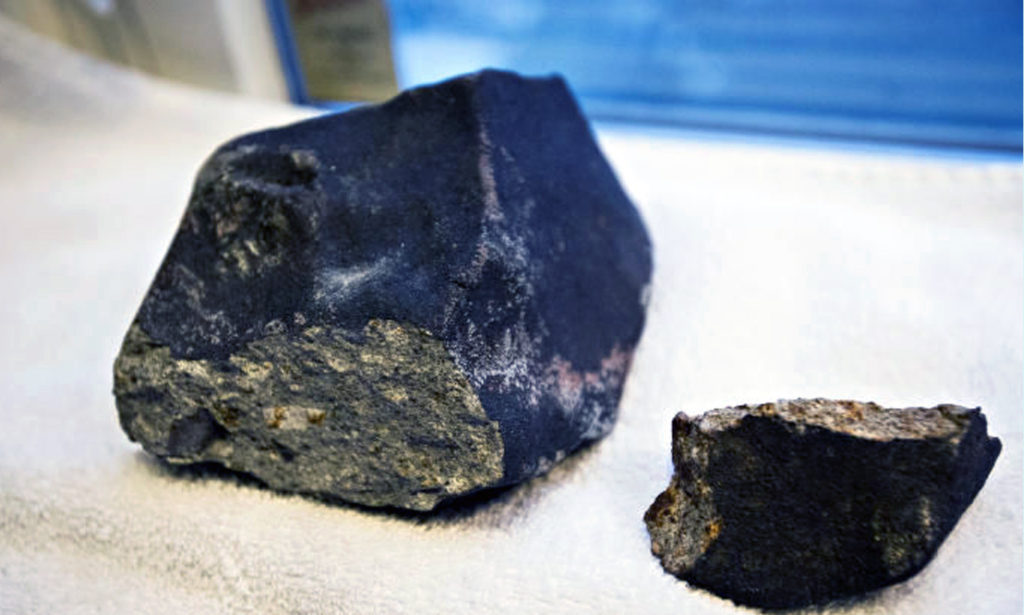
The two larger fragments of the 2.8-kilogram mass. Photo: Geir Barstein
The Frierveien kindergarten fragments (~178 g)
Between 16 and 25 March several fragments of a mass weighing about 178 grams were found about 800 meters from the find location on Ekebergsletta. The meteorite had hit an asphalt surface of a parking lot just outside the fence of the Frierveien kindergarten in Ekeberg, at location 59°53.329′ N 10°46.491’E. Five fragments (32.75, 13.2, 12.65, 4.95 and 4.75 grams) were found on 17 March by Maciej Burski. The biggest 32.75-gram fragment was used to measure cosmogenic radionuclides. Al-26, Na-22, Mn-54, Co-57 and Co-60 were detected but the very shortlived isotopes Cr-51, Be-7 and Co-56 could not be detected. Later Burski found other fragments weighing about 20 grams. Other searchers later found more weathered fragments which had been broken by cars and spread out by a snowplow adding up to a total of about ~178 grams.
The Ekeberg specimen (115 g)
The specimen fell through a tree onto grass and then was cleaned by the finder. The meteorite was sold to an English collector which stimulated a discussion about the regulation of meteorite falls and finds in Norway. The English collector cut off a piece at the end and then sold the remaining mass of 110.1 grams.
The inofficial Grefsen mass (4.65 kg)
A 4.65-kilogram mass (including a 3055-gram main mass) was reportedly found on 26 April in Grefsen by a person who wanted to remain anonymous. After its presentation in the media not much was known about it until eventually astronomer Knut Jørgen Røed Ødegaard admitted that he had bought it. He refused to have it available for research or offer it for acquisition by the Naturhistorisk museum at Tøyen in Oslo. Instead he presents the meteorite during his company’s public shows. This led to a public dispute between Ødegaard and NHM director Arne Bjørlykke and Hans Erik Foss Amundsen (among others) about regulation concerning meteorite falls in Norway as well as collaboration between institutes and private meteorite searchers.
Scientific literature
What we know about Oslo meteorite from cosmogenic isotope analysis
Z. Tymiński, M. Stolarz, T. Kubalczak, P. Zaręba, M. Burski, M. Bilet, E. Miśta, K. Tymińska, E. Kołakowska, A. Burakowska, P. Żołądek, A. Olech, M. Wiśniewski, A. Listkowska, and P. Saganowski
EPSC Abstracts
Vol. 10, EPSC2015-584, 2015
European Planetary Science Congress 2015


